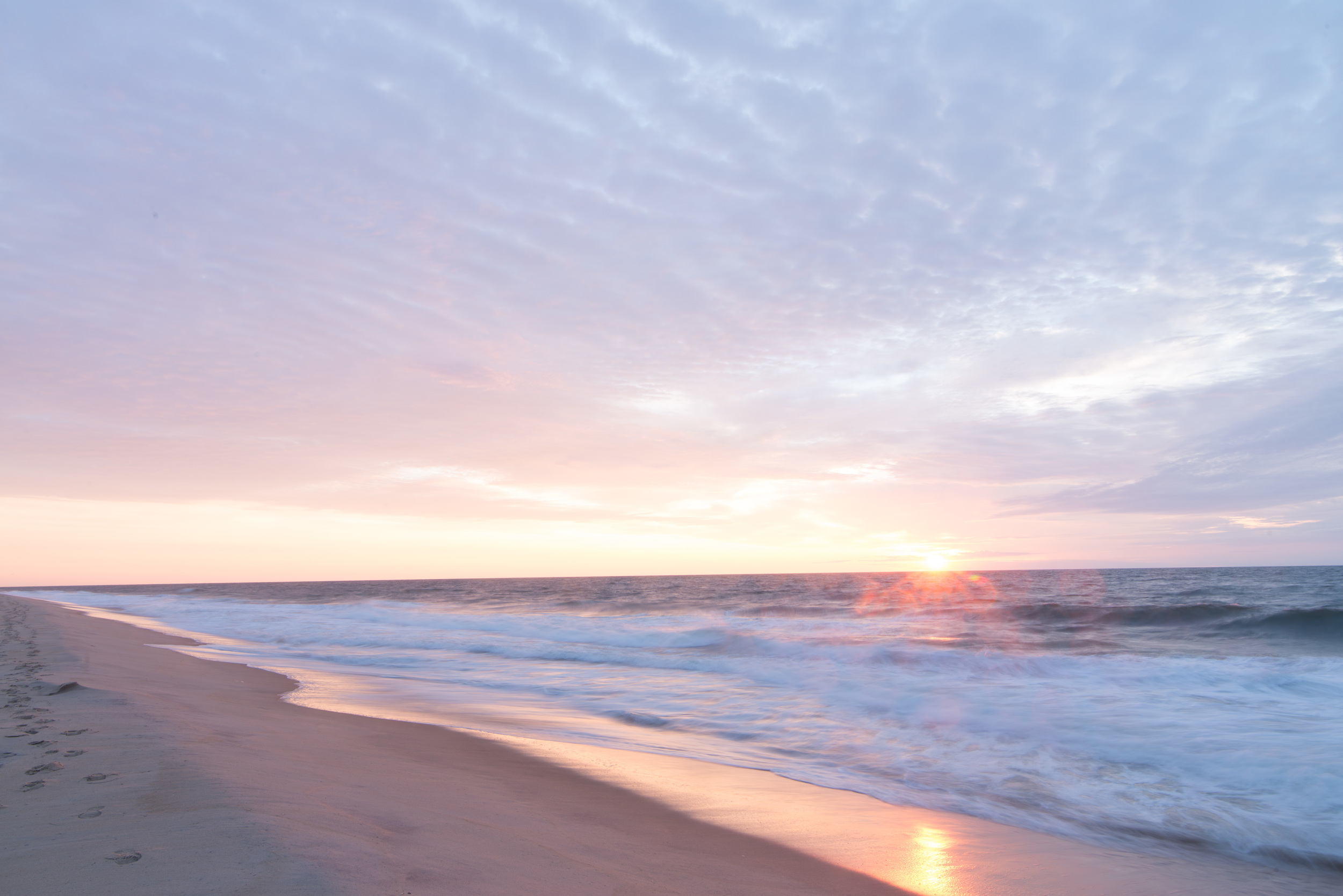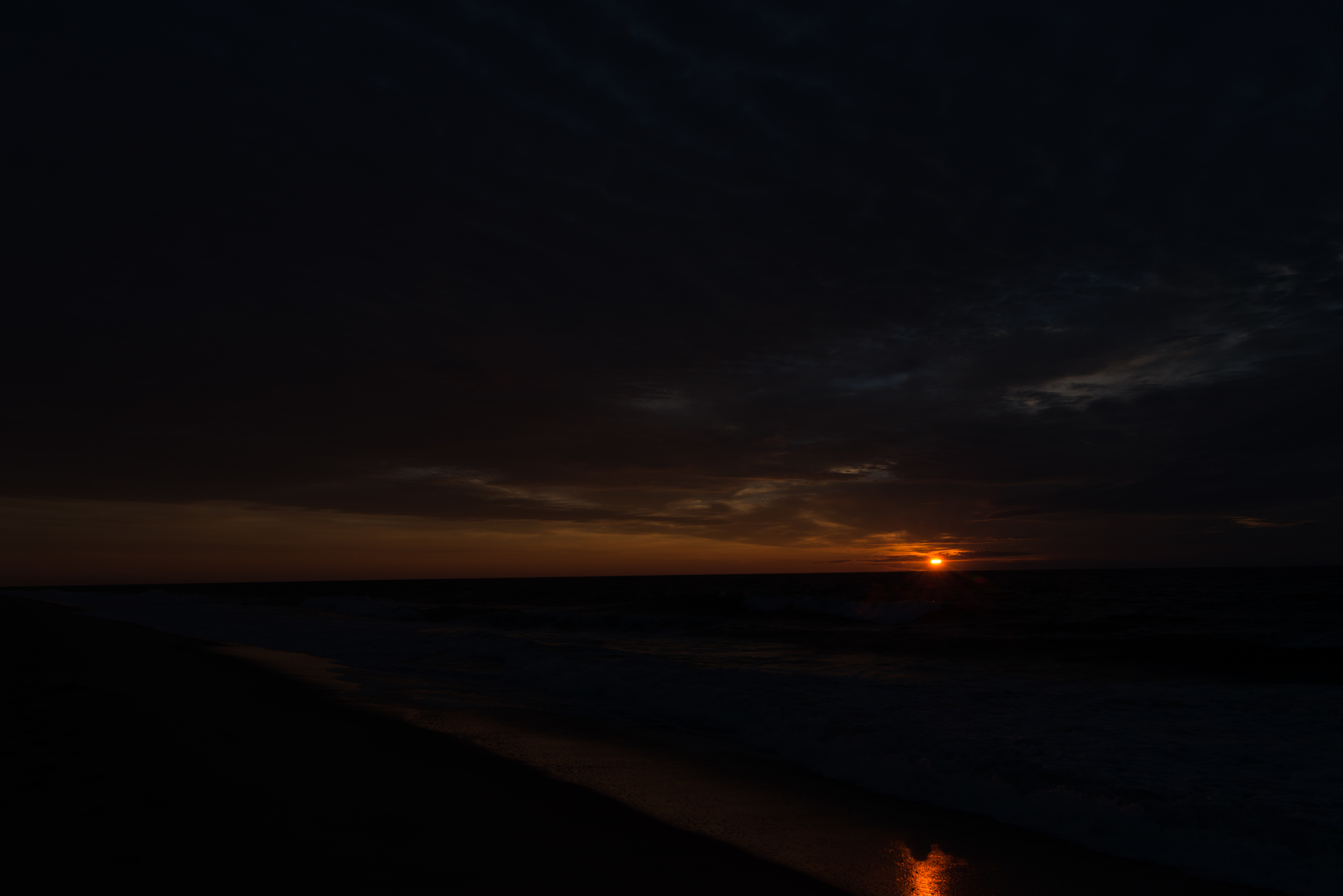I started out as a photographer capturing landscapes and loved it. The feeling of harmony and connection with our beautiful world becomes palpabile in the early beams of dawn. With the sound of the echoing surf breaking on the beach, the chill in the air was refreshing and exhilarating. The extra hour afforded by the end of Daylight Savings Time meant I could convince my wife to accompany me to the cliffside before dawn. Sharing something this beautiful made the sunrise even sweeter.
I Don’t Give Up
Some mornings are just full of gloom. Dark skies, thick clouds, dreary days can weigh down the spirit. I have to remind myself that there are opposite days that greet us with color and light. Planning for these days can be tricky, just ask any weatherman / soothsayer. I just have to believe the good days outnumber the bad ones. I’m not convinced yet, but hopefully I’ll have many more chances.
D800 Tamron 16-28mm f/2.8 @ 16mm f/6.3 ISO 100 1/50 sec
Quiet Stillness
Winter brings a stillness when the Earth is covered in folded snow. Winds speed over silent meadows, passing unimpeded by leaves and foliage. Silent yet forceful breaths of nature, fill the muted dawn. Barren trees reach into the sky like lifeless memories, and bleak thoughts of quiet stillness float in the thin air. A time to reflect, a time to remember, a time of repose.
Nikon D4 Tamron 24-70mm f/2.8 @ 70mm f/4.5 ISO 400 1/2500 sec
Morning Flow
I knew Saturday would be a busy day. I had woken up extra early to get a jump on it. During the Winter my days often begin and end in gloomy darkness. Sometimes I pass a wonderful spot and I have a few minutes to park, soak in the beauty of our world, brave the frigid air, and snap a few pictures. Saturday morning was like that. The sunrise breathed new life into my tired eyes, so I thought I should share it.
Nikon D800 Tamron 24-70mm f/2.8 @ 46mm f/8 ISO 800 1/250 sec
The Art of the Sunrise Part Two
Last week I wrote about the difficulty of capturing the enormous dynamic range of a sunrise. In case you missed it click here. At the end of the article I mentioned another way to recreate this daily celestial event through photography, H.D.R. or High Dynamic Range photography. If you’re going to process images through a program that uses this technology, you have to do a little planning before you take the picture with your camera. The key to the whole process is that multiple pictures are taken of the same scene at different exposure settings. The darkest image needs to be dark enough so that the brightest part of the picture is not pure white. When a sunrise is the focus of the picture this spot is normally the Sun. The brightest image needs to be light enough so that the darkest part of the picture is not pure black. This is so that during post processing there is color information throughout the picture. Effectively the dynamic range of the picture is compressed to accurately reproduce what the eye perceived but the camera was incapable of recording. This photograph was processed using Nik (Google’s) HDX Efex Pro 2. I took nine images. Here are the darkest and lightest:
After the magic of the HDR program we have this:
And here’s the finished image after a few touch ups in Photoshop.



